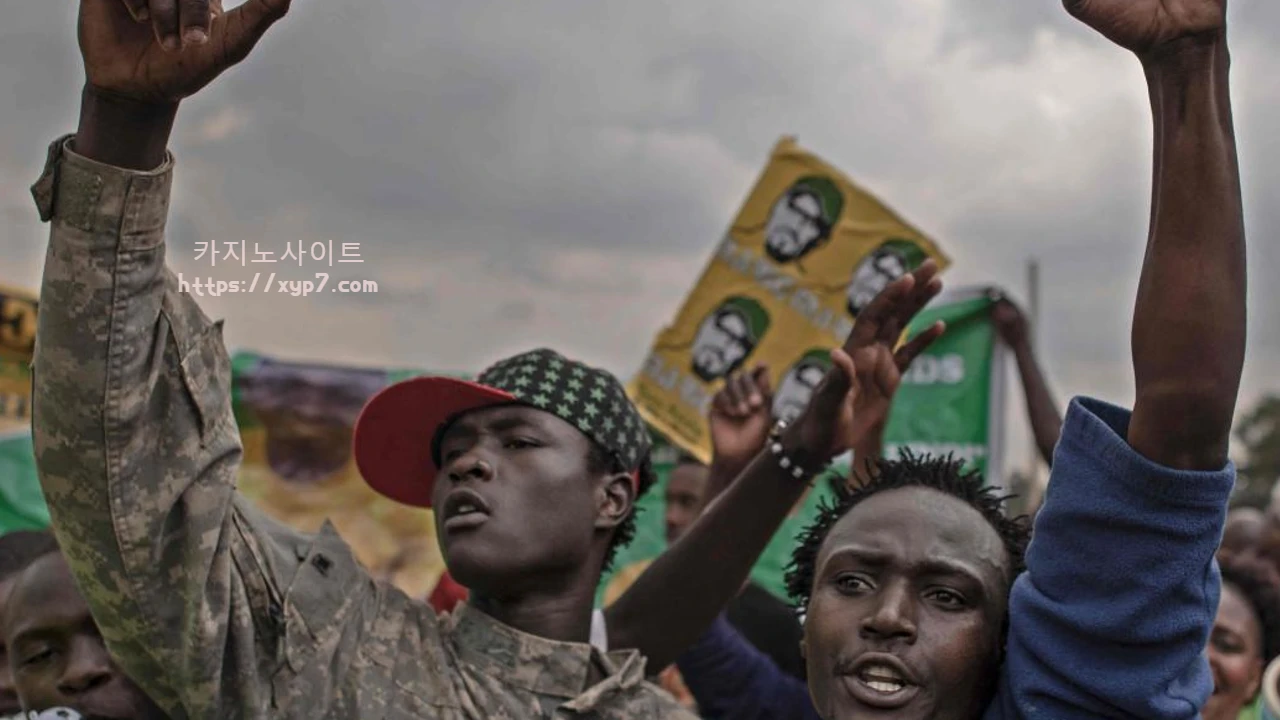
Violence in Kenya: 5 Main Causes of Conflict in the North and What Can Be Done About Them
Conflict and insecurity are rife in northern Kenya. In recent weeks, a spate of bandit attacks in the area has terrorized the countryside and killed many people. In October 2022, the government launched a multi-agency security operation to prevent further attacks.
Northern Kenya is characterized by a large desert, harsh climate and low development. The area borders Ethiopia, Somalia, South Sudan and Uganda.
Examples of conflict and insecurity range from attacks by armed bandits and herdsmen to civil conflicts over resources and terrorism. The area covers about 60% of Kenya’s land area. About 18 percent of the city’s population uses it. Hunting is the main economic activity. Others include irrigated agriculture, small businesses, and tourism-related activities. This region is isolated from other countries due to poor infrastructure, especially roads. 카지노사이트
According to crime statistics from the National Police, between January and December 2021, 73% of thefts of local products occurred in the northern region. At the same time, 58% of illegal weapons obtained and handed over to the government came from northern Kenya.
The government – past and present – has done a lot of work to address the violence in the region, which threatens Kenya’s security. But it doesn’t work.
As a political science professor who studies conflict, I’ve had the region on my radar for some time. According to my assessment, the violent conflict in northern Kenya is mainly driven by state and non-state agencies.
Regional Inequality, Exclusion and Exclusion
Regional inequality in Kenya is caused by decades of political, economic and social exclusion. It is a product of colonial and postcolonial state policies that have led to historical injustice and human rights violations. The ruling government neglected Kenya’s arid and semi-arid regions by prioritizing the development of the country’s rich highlands. Successive governments after independence continued to pursue policies that made the mountains separate again. This has undermined trust in state institutions and generated community grievances that hinder central unity.
The post-colonial state security actors have also focused unfairly on the people of Somalia in the fight against terrorism and terrorism in the north. The source of the threat is from the Somalia-based Al-Shabaab group.
Read: Jeff Bezos Says He Will Give Away $124 Billion Before He Dies
In 2010, Kenya decentralised, decentralizing funding and services to its 47 local governments. This is intended to improve service delivery at the regional level. Although this has begun to address the exclusion of northern Kenya, security operations continue to promote inter-group conflict and counter-violent extremism. The use of force in neglected projects in oppressed communities.
Resources and environment
Disputes over land, grazing and conflicts between herdsmen and farmers continue to fuel violence in northern Kenya.
Competition for scarce resources, such as pastures, water and current oil, has exacerbated these conflicts. Kenya announced that it had discovered oil in the Turkana region in 2012. Oil exploration has led to new conflicts between the Turkana and Pokot tribes, and within the Turkana community. Some Turkana believe that the community has not benefited much from resource exploitation.
The increase in crimes such as street theft is due to these communal conflicts.
Distribution of political power
Power struggles between political parties have led to ethnic tensions in the north. The elected political position is seen as allowing access to wealth. Decentralization of power and political alliances have helped to spread political power and provide essential services. However, they have increased political competition at the local level. Politicians stir up ethnic tensions, increase conflict and undermine the benefits of governance.
Cultural practices
Cultural practices contribute to violence in northern Kenya. These actions usually occur in cattle theft.
Cattle and animal husbandry are driven by economic motives. These include the desire to restore herds that have run out of food and water during droughts. Cattle ranching also provides an opportunity to earn money by trading in stolen livestock. Traditions such as marriage contracts also lead to cow theft.
This disrupts civilian life and the use of automatic weapons in attacks has led to high death tolls. Efforts to disarm the state have had little effect.
Increase in Small Arms and Ammunition
The proliferation of weapons in the region is, to a large extent, the cause of events beyond. Kenya’s borders with Ethiopia, Somalia, South Sudan and Uganda are unstable and have contributed to the proliferation of small arms, illegal livestock trade, terrorism and organized crime.
State attempts to manage intra- and cross-border conflicts through disarmament operations have exacerbated tensions between border communities and the state.
Way to Follow
State security officials have the constitutional authority to use force to stop and disrupt acts of violence that pose a threat to national security. However, their methods are often methodical and power-based. On the other hand, the non-actors follow the procedures that are well accepted in the community. They are based on mutual trust, so they are considered more accurate. Both state and non-state actors have the resources, expertise and experience to deal with insurgents in northern Kenya. A reform process that involves different actors can contribute to good governance and reduce the impact of conflict and security.


At the beginning, I was still puzzled. Since I read your article, I have been very impressed. It has provided a lot of innovative ideas for my thesis related to gate.io. Thank u. But I still have some doubts, can you help me? Thanks.